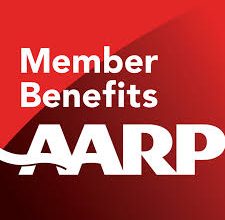Health insurance is a necessity in today’s world, yet many struggle to afford quality coverage. If you find yourself in this situation, do not despair – with some effort and strategic decision-making, affordable health insurance is within reach. In this post, we will break down the different types of plans available and how to navigate your options. By the end, you’ll have the knowledge and tools needed to select a policy that fits your needs and budget.
Let’s begin our journey towards attaining healthcare security with a brief overview of the current landscape.
Understanding the Healthcare Landscape
The healthcare system in the United States is complex, with many moving parts. Here are a few key concepts to be aware of as you search for affordable coverage:
The Affordable Care Act (ACA) – Also known as “Obamacare”, the ACA reformed the individual health insurance market and expanded Medicaid eligibility. It established Health Insurance Marketplaces where individuals can shop for and purchase qualified health plans.
Health Insurance Marketplaces – Often called “exchanges”, these are online platforms where individuals can compare plans side by side. Plans offered on the Marketplace must meet minimum coverage requirements laid out in the ACA.
Medicaid – A joint federal-state program that provides health coverage to low-income individuals, families, children, pregnant women, the elderly, and people with disabilities. Eligibility and covered benefits vary by state.
Employer-Sponsored Insurance – Many Americans receive coverage through their job. However, not all companies offer health benefits, and premiums are rising annually.
Understanding this high-level context will make navigating your options much easier. Now let’s dive into specific paths and strategies for finding affordable coverage.
Medicaid Eligibility
One of the most affordable options is Medicaid. To qualify, your household income must be at or below 138% of the federal poverty level. For example, as of 2022, the annual income threshold is $17,774 for a single person or $27,180 for a couple.
Eligibility may also depend on other factors like assets, family size and disability or pregnancy status. The good news is many more people are eligible today thanks to ACA Medicaid expansion. To determine if you qualify, visit your state’s Medicaid website or healthcare.gov.
Proving eligibility can involve submitting pay stubs or tax returns as proof of income. Be prepared to show identification as well. Once accepted, Medicaid typically covers many medical expenses with little to no cost sharing. It is highly recommended to explore this route first if your finances are tight.
Health Insurance Marketplace Plans
If your income is above Medicaid limits, the Health Insurance Marketplace is the next best place to shop. Plans are categorized into four metal tiers based on how much of healthcare costs they pay on average:
- Bronze – Plans pay 60% of costs on average, leaving you responsible for 40%.
- Silver – Plans pay 70% of costs on average, leaving you responsible for 30%.
- Gold – Plans pay 80% of costs on average, leaving you responsible for 20%.
- Platinum – Plans pay 90% of costs on average, leaving you responsible for 10%.
Within each tier, multiple plans from various insurance companies compete for your business. Premium costs vary based on the chosen coverage level, provider networks, deductible amounts, and other factors. Generally, higher premiums correlate with lower out-of-pocket costs when receiving care.
To qualify for Marketplace coverage, your annual household income must be between 100-400% of the federal poverty level. If it falls within this range, subsidies in the form of premium tax credits may be available to reduce your premium costs. The lower your income, the bigger the subsidy. These lower your share of premiums on a sliding scale.
To select a Marketplace plan, visit healthcare.gov between open enrollment periods (usually November-December). You can filter and sort plans by estimated premium, deductible, networks, and more. Be sure to review details on prescription drug coverage and provider access. Take time to compare multiple options before deciding.
Employer-Sponsored Insurance
Nearly half of all Americans receive health benefits through their employer. Coverage is typically cheaper and more comprehensive than individual market options. However, not all jobs provide insurance. Some companies charge high premiums as well.
It’s important to understand your workplace insurance options during open enrollment each year. Stay informed on premium costs, deductibles, networks, and any contribution amounts deducted from your paycheck. Healthcare is a large expense, so maximize any employer contribution you can get.
Even if your workplace insurance seems unaffordable, consider comparing the premiums to Marketplace plan options. Employer plans may end up cheaper than individual coverage once subsidies are factored in. Workplace benefits are also pre-tax while individual premiums are post-tax.
In summary, always evaluate available employer plans as your primary health coverage source if possible due to typically lower costs. This helps maximize affordable options before moving to individual market solutions.
COBRA Continuation Coverage
Losing a job brings uncertainty, but COBRA provides peace of mind by continuing employer coverage for a limited time. Under this federal law, employers with 20+ workers must allow former employees and dependents to temporarily keep their existing health plan.
COBRA coverage usually lasts 18 months after leaving or reducing hours. Premiums are 102% of the full group plan cost, so individuals pay the full premium plus a 2% administrative fee. This exceeds individual market premiums.
However, for those transitioning to new jobs without immediate benefits, COBRA bridges the gap affordably compared to individual options. Make payments on time to avoid interruption. Stay aware of options nearing expiration to find permanent affordable solutions.
Special Enrollment Periods
All major life changes allow a Special Enrollment Period to enroll in new individual market coverage outside the regular annual Open Enrollment window. Events include things like losing job-based coverage, changing addresses, getting married or divorced, and having a baby.
If one of these qualifying events occurs, you have 60 days to sign up via healthcare.gov. Special Enrollment is crucial for maintaining continuous coverage during transitions. Be aware of time frames and change update your application promptly following major life changes.
Free or Low-Cost Programs
Certain populations qualify for free or low-cost government programs beyond Medicaid. Examples include:
- Children’s Health Insurance Program (CHIP) – For kids in families with income too high for Medicaid yet still struggle to afford private coverage.
- Health Center Program – Community health centers provide primary care on a sliding scale based on income regardless of insurance status.
- Ryan White HIV/AIDS Program – Services for low-income people living with HIV who lack sufficient private coverage.
Research free clinics, county indigent programs, and more options serving your local community. Non-profit groups may assist with applications as well. Exhaust all potential programs for your situation before paying top dollar privately.
Cost-Saving Tips
Even after choosing the most affordable plan, out-of-pocket costs like deductibles, copays, and coinsurance remain. Consider these additional strategies to save over the long run:
- Ask providers about self-pay or income-based discount rates for services. Negotiate lower costs directly when possible.
- Use generic prescription drugs whenever an equivalent is available. Request lower-cost alternatives from your doctor.
- Fulfill routine preventive care like physicals, screenings, vaccines and contraception at no charge under ACA provisions.
- Check your plan formulary for lowest-tier medications. Ask for generics or switch to preferred brands if cheaper.
- Visit urgent care clinics rather than the ER for non-emergencies to avoid high bills.
- Take advantage of Telehealth options for quick, affordable doctor visits instead of the office when feasible.
Maximize free preventive benefits while being cost-conscious. Every dollar saved on medical expenses makes your insurance more affordable in the long run.
Conclusion
Obtaining affordable, comprehensive health insurance takes diligent research and decision-making. This post covered the major paths like Medicaid, individual markets, employer plans, and special programs. My hope is you now have a thorough understanding of available options and how to select one tailored to your budget and situation.
Navigating the changing healthcare landscape requires effort but securing coverage is crucial for your wellbeing and financial security. With the tools provided here, you are empowered to attain a suitable level of protection. If further assistance is needed, free counselors are available through many state resources. Stay determined – affordable healthcare is within reach!





